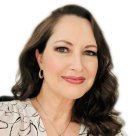
No, it’s not the title of an upcoming science fiction film. It’s the subject of a study at the University of British Columbia that researchers hope could shed light on both the future of space travel, and efforts to fight cancer back on Earth.
Last November, UBC pharmaceutical science professor Corey Nislow was among the lucky few who were able to send research samples aboard NASA’s Artemis 1 lunar mission.
Tucked into a shoebox-sized container were samples of yeast and algae that spent a month in space, orbiting the moon before splashing back down to Earth in mid-December.
“We’ve worked yeast for over a century, motivated by making better beer. But we learned quite a bit about it,” Nislow told Global News Wednesday, as he prepared for what he hopes to be a decade of research on the samples.
Yeast is the ideal research product, he said, because about two decades ago scientists were able to tag every individual gene in the yeast genome with “a little DNA barcode,” creating a library of about 6,000 mutant strains each differing by one single gene.

Researchers have spent the last two decades testing those mutants under a variety of conditions and building a database to understand what each of those genes do, he said.
“Now we’ve got the opportunity to take those very same mutants and send them for the first time on a trip to (the moon) … We can ask the simple question, which mutants were the most sensitive to being exposed to cosmic radiation in lunar orbit, and which yeast mutants were most resistant.”
“We will identify those genes, make a list, and then ask what do we know about those same genes in human cells? ”
Researchers have already spent considerable time simulating the effects of cosmic radiation on yeast samples with the use of powerful particle accelerators.
That research has allowed Nislow to make predictions about how the real space samples might react, including effects on human DNA.
Now they’re getting ready to test those predictions on the real deal.
There are obvious long-term practical applications for humans, animals and plants on future missions to the Moon, and even to Mars.
But Nislow said the research could one day help save lives on Earth, informing the design of better treatments for cancer patients undergoing radiation and chemotherapy.
“My dad just finished a round of radiation for prostate cancer, and his prognosis looks good — but that treatment involved delivery of highly energetic particles to the cancerous tissue and then a period of recovery in between each treatment which involved countermeasures like diet and drugs that bolstered his body and his cells in between treatment,” he said.
“The state of the art of that therapy is wonderful but we can certainly make it better — lessen the time of exposure and increase the time of recovery. Those sort of countermeasures are not going to be ready tomorrow based on these experiments, but we will certainly get insight.”
Humans are set to return to the Moon for the first time in a generation in 2024 when a crewed mission will conduct a flyby before returning to Earth.
In 2025, the Artemis III mission is scheduled to send a human landing team to the lunar surface for the first time since 1972, and there are plans to build a long-term human outpost on the Moon by 2030.
If a permanent base becomes a reality on the moon, Nislow hopes to have his yeast samples return, so they can be archived, tracked and maintained for as long as possible.
In the meantime, he said he’s got plenty of exciting work ahead, as he dives into the samples of his mutant yeast from space.





Comments